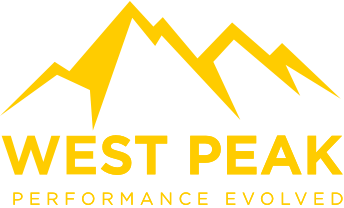Diversity and Inclusion in Leadership: Building Teams That Drive Innovation
In today’s competitive landscape, businesses need more than just solid strategies and innovative products to thrive. Diversity and inclusion (D&I) are becoming core tenets of successful leadership, allowing teams to harness different perspectives, solve complex problems, and drive forward-thinking solutions. But how can leaders foster this environment effectively?
Why Does Diversity in Leadership Matter?
Diversity in leadership is more than a trend; it’s a powerful driver for innovation. Research has consistently shown that diverse teams are more creative, better at problem-solving, and more likely to outperform homogeneous ones. The reason is simple: different perspectives spark fresh ideas. When leaders bring together people from varied backgrounds, they foster a culture of creativity, which is essential for staying ahead in an ever-evolving business world.
But it’s not just about having diverse voices at the table; it’s about listening to them and ensuring everyone feels valued. Inclusive leadership transforms diversity into a real competitive advantage, as it helps avoid groupthink and opens the door to alternative solutions that might otherwise be overlooked.
At West Peak, we’ve seen firsthand how companies that embrace diversity and inclusion in their leadership outperform those that don’t. Learn more about how we drive leadership success.
How Does Diversity Foster Innovation?
Innovation thrives in environments where unique ideas are encouraged. Diversity provides the raw material for these ideas by bringing together different cultural, educational, and experiential perspectives. When leaders cultivate a diverse team, they tap into a wellspring of ideas that fuel creativity and innovation.
Consider this: when people from different backgrounds collaborate, they challenge assumptions and consider alternative approaches, leading to breakthroughs. This cross-pollination of ideas can create unexpected synergies, enabling companies to develop products or services that better meet the needs of a broad range of customers.
However, the key to leveraging this diversity for innovation lies in fostering an inclusive culture where all ideas are heard, respected, and considered. Simply having diversity isn’t enough; leaders must ensure they nurture an environment where every team member feels empowered to contribute.

What Strategies Can Leaders Use to Build an Inclusive Culture?
Building an inclusive culture requires intentionality from leadership. Here are some actionable strategies:
- Lead by Example: Leaders need to model inclusive behaviours themselves. This means being open to feedback, encouraging diverse opinions, and being willing to acknowledge when they don’t have all the answers.
- Prioritise Inclusive Hiring Practices: Ensure your recruitment process is free from biases by using diverse hiring panels and anonymising applications during the initial review stages. Bringing in a wide range of perspectives starts with how you hire.
- Create a Safe Space for Open Dialogue: Encourage open conversations about inclusion, where employees feel comfortable sharing their experiences and insights without fear of reprisal. When employees feel heard, it strengthens their connection to the team and the company.
- Ongoing Education and Training: Foster continuous learning by providing diversity and inclusion training, workshops, and mentoring programmes. These initiatives can help break down unconscious biases and encourage a more inclusive mindset among all employees.
By embedding these strategies into your company’s DNA, you create a culture where every team member feels valued, and this translates into a more innovative and dynamic organisation.
How Can Leaders Measure the Success of Their D&I Efforts?
To ensure your diversity and inclusion efforts are effective, it’s important to measure progress regularly. This can include:
- Employee Feedback: Conduct anonymous surveys to gauge how employees feel about the inclusivity of the workplace. Regular feedback helps identify areas for improvement.
- Diversity Metrics: Track your workforce diversity across various levels, from entry positions to leadership roles. The goal isn’t just to hire diverse talent but to retain and promote them.
- Engagement and Innovation Metrics: Are your teams more engaged? Are you seeing increased innovation, collaboration, or problem-solving? These metrics can signal the success of your D&I initiatives in a more qualitative way.
At West Peak, we believe that a diverse and inclusive culture is key to leadership excellence. Learn more about how we help leaders build inclusive teams.

How Does Inclusion Strengthen Team Morale and Retention?
Inclusion isn’t just good for innovation—it’s crucial for employee retention. When team members feel included and appreciated, they’re more likely to be satisfied with their jobs, which in turn reduces turnover. High turnover is costly, both financially and in terms of lost talent and productivity. By fostering an inclusive culture, leaders can build a sense of belonging that encourages team members to stay and grow within the organisation.
An inclusive culture also fosters loyalty. When employees feel that their unique contributions are recognised and valued, they’re more likely to be invested in the company’s success, going above and beyond in their roles.
Diversity and Inclusion as a Leadership Imperative
Diversity and inclusion aren’t just checkboxes for leaders to tick off; they are essential ingredients for innovation, team morale, and long-term success. As the world becomes increasingly interconnected, the ability to bring diverse voices together will only grow in importance. Leaders who prioritise inclusivity not only create stronger, more dynamic teams but also drive better business outcomes.
At West Peak, we’ve seen how embracing diversity can unlock potential and propel organisations forward. Explore our leadership development programmes to see how we help teams thrive through diversity.
Subscribe to our Podcast
Hosted by our very own Ben Stocken and Benjamin Wade our ‘How They Lead’ podcast aims to evolve the way people perform in leadership roles by showcasing a variety of high performance interviews with people from Patrick Kershaw from The RAF Red Arrows to CEO’s like Steve Phillips who help large brands like Pepsi, Mars and Unilever.
Get one step ahead – Click below to subscribe.










